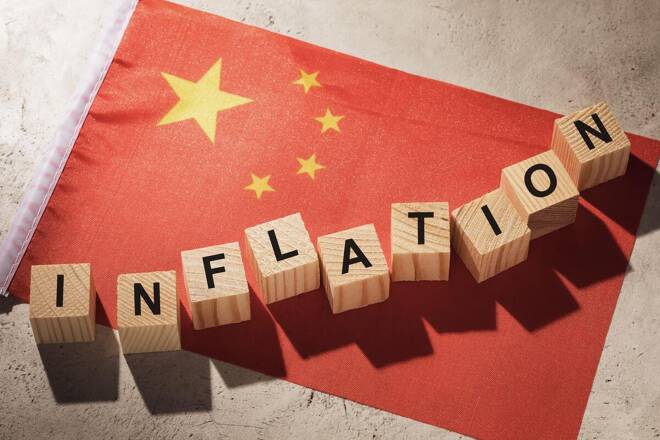Advertisement
Advertisement
China Inflation Numbers for May Call for Stimulus
By:
China inflation numbers raised more red flags this morning. After disappointing trade data, the larger-than-expected fall in the PPI will concern Beijing.
It is a quiet Friday morning on the Asian economic calendar. However, the Chinese economy was in the spotlight. Disappointing trade data raised hopes of fresh stimulus to support the waning economy. The China inflation figures would further influence market sentiment toward stimulus.
Wholesale inflation numbers for April signaled weak demand, with the producer price index falling by 3.6% year-over-year. Significantly, the numbers sounded the recession bells, increasing market sensitivity to today’s report.
Today’s numbers provided more incentive for stimulus, with the Producer Price Index and CPI numbers reflecting weakening demand.
The annual inflation rate picked up from 0.1% to 0.2% in May versus a forecasted 0.4%. Inflation remained soft, with consumer prices falling by 0.2%. In April, consumer prices declined by 0.1%.
However, the Producer Price Index garnered more interest, falling by 4.6% year-over-year versus 3.6% in April. Economists forecast the Producer Price Index to decline by a more modest 2.8%.
AUD/USD Reaction to China Inflation
Before the inflation numbers, the AUD/USD rose to an early high of $0.67169 before falling to a pre-stat low of $0.67056.
However, in response to the inflation numbers, the AUD/USD fell to a post-stat low of $0.67046 before rising to a high of $0.67117.
This morning, the AUD/USD was down 0.08% to $0.67103.
Next Up
Eying the US session, there are no US economic indicators to shift the mood following the jobless claims on Thursday.
There are also no FOMC member speeches to consider, with the FOMC in the blackout period until June 15.
Thursday’s larger-than-expected rise in US jobless claims eased bets on a June Fed interest rate hike. However, the markets remain divided on a July move ahead of Tuesday’s US CPI Report.
While the markets are betting on a June Fed pause, the probability of a 25-basis point Fed interest rate hike stood at 52.3% this morning, according to the CME FedWatch Tool.
About the Author
Bob Masonauthor
With over 28 years of experience in the financial industry, Bob has worked with various global rating agencies and multinational banks. Currently he is covering currencies, commodities, alternative asset classes and global equities, focusing mostly on European and Asian markets.
Advertisement
